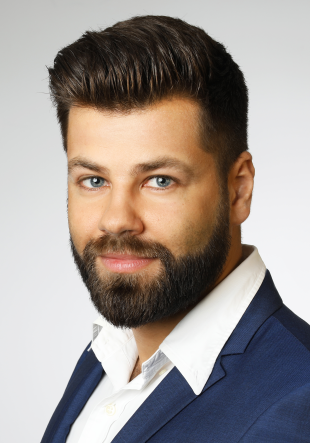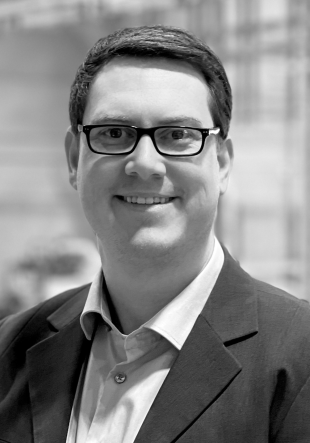6.7 million euros of funding – Paderborn University is leading a Europe-wide research project
Industry 4.0 – an industrial revolution that is reliant on both digitalisation and innovative product solutions. However, requirements of manufacturing processes, components and construction are on the rise: more resource-efficient, faster, longer lasting, more effective, suitable for series production, competitive yet also cost-effective, and the list goes on. Additive manufacturing (AM), often known as 3D printing, offers great potential as it can be used to produce hugely complex lightweight components. The next stage of development in the field of metal 3D printing lies in producing multi-material components, in which two or more materials can be arbitrarily allocated as desired. A Europe-wide research team headed by Paderborn University is now seeking to develop industrial applications for this revolutionary technology. Additive manufacturing using multiple materials with different physical properties should take industrial opportunities to the next level. The aim is to enable an unprecedented level of design freedom for highly complex (lightweight) components. To achieve this, the project team is developing innovative multi-material components with locally tailored mechanical, electrical, thermal and magnetic properties for use in the automotive and aerospace industries.
‘MADE-3D’ (Multi-Material Design using 3D Printing) – as the project is called – has received around 6.7 million euros of funding for the next three and a half years as part of the European Union’s ‘Horizon Europe 2022’ programme. The consortium, consisting of research institutions, additive manufacturing market leaders, the aerospace industry, automotive engineering and start-ups, offers a wide range of international expertise: alongside Paderborn University, the project partners are SLM Solutions, the Fraunhofer Institute for Casting, Composite and Processing Technology IGCV (all three from Germany), the University of the Aegean (Greece), f3nice (Italy), Exponential Technologies (Latvia), QuesTek Europe (Sweden), AVL List (Austria), Skyrora (UK), Safran Additive Manufacturing Campus, the French Alternative Energies and Atomic Energy Commission CEA (both from France), Amires (Czech Republic) and the Swiss Centre for Electronics and Microtechnology CSEM (Switzerland).
The right material in the right place
‘Multi-material manufacturing using 3D printing is still in its infancy. The lack of material combinations is the biggest challenge preventing a breakthrough for this technology. “MADE-3D” should offer a leap forward in this regard’, emphasises project coordinator Professor Thomas Tröster, head of the Automotive Lightweight Design (LiA) research group and chair of the Institute for Lightweight Design with Hybrid Systems (ILH) and the Paderborn Institute for Additive Fabrication (PIAF) at Paderborn University.
Although additive manufacturing now enables components to be customised to a virtually limitless extent and various functions to be integrated into a single printing process, this requires suitable materials. However, the homogeneous material properties imply that they are insufficient to meet the complex requirements – including flexibility, temperature stability and magnetic properties. Furthermore, the majority of steels and alloys cannot be printed due to cracking. This problem is even more pronounced if two or more materials are combined in an additive process.
This is where the international team of experts comes in. They are seeking to work together to substantially increase the performance of multi-material components and significantly reduce their weight in order to create new opportunities for lightweight construction. ‘Our goal is to use the project’s findings to achieve better process reliability and speed in multi-material additive manufacturing and thus further industrialise this innovative technology’, underscores Professor Mirko Schaper, Chair of Materials Science (LWK) at Paderborn University and project co-leader.
Computational prediction of the material properties required
The work begins before the actual printing process. ‘Thus far, 3D printing materials have been developed entirely empirically through a series of experiments. This is both costly and time-consuming’, Schaper explains. The team is therefore focusing on systematic computer-based material design. What makes this special is that the desired material properties can be calculated and predicted for each application based on the chemical composition. A material combination is then created for each multi-material candidate within two or three iterations, which can then serve as a blueprint for countless other applications. The use of machine learning in process development should result in reduced development cycles and promote the digitalisation of the process chain.
The path from powder to component then uses two additive manufacturing technologies. Laser powder bed fusion (L-PBF) and direct energy deposition (DED) enable the atomised material combinations to be printed in 3D in a local, targeted manner, producing high-quality components.
Applications for the automotive and aerospace industries
The project team is testing innovative approaches in five areas of application within the automotive and aerospace industries. The objectives for this have been clearly defined: printed multi-materials should reduce the weight of individual parts by up to 50 percent compared with the components currently used – by replacing materials (using lighter metals) and making them using AM (i.e. lower material consumption and customisable functions). Specifically, the areas they are working on include designing lighter drive systems for aviation, in order to save costs and make significant progress in sustainability. They also want to optimise the performance of electric motors by using suitable material combinations, which enable better magnet placement and orientation of the magnetic flow. The project results should ultimately be transferable to numerous other sectors, such as health and energy.
Sustainability in production, use and recycling
‘Additive manufacturing methods enable significant energy and resource savings during production. Using lightweight components, e.g. in means of transport, also means that less energy is required, e.g. to accelerate. In addition, we are testing various processes in terms of the separation efficiency of hybrid components in order to be able to recycle material mixtures as effectively as possible. With our new models, it should be possible to recondition and re-use up to 99 percent of the used material’, Tröster explains.
The project’s initial findings are expected in six months’ time.
The Automotive Lightweight Design (LiA) research group, the Chair of Materials Science (LWK) and the Direct Manufacturing Research Center (DMRC) at Paderborn University are all involved in ‘MADE-3D’.










